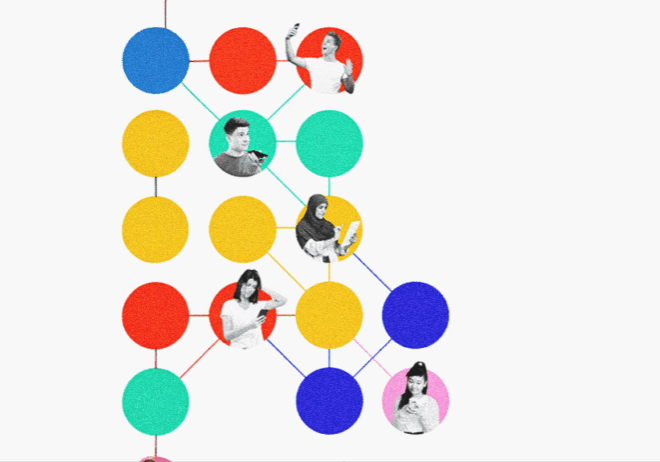
Comfort Zone Creativity Poses Challenge for Brands, Risk-Takers Can Win
In a world increasingly defined by polarization and hyper-visibility, comfort zone creativity is entering what many insiders call a cautious phase.
The 2025 State of Creativity report by LIONS reveals a telling statistic: only 13 percent of brands feel they operate in a creative, risk-friendly environment. Meanwhile, 29 percent of surveyed respondents say their organizations are highly risk-averse.
That’s nearly one in three marketers admitting that bold creativity is discouraged and seen as a liability.
It’s a paradox. At a time when cultural moments demand brands to have a point of view, many are retreating into the safety of bland, vanilla storytelling. The result? Formulaic campaigns that fail to resonate. We will dive deep into the issues and brands defying and winning.
Creative confidence is waning
The consequences of staying too safe to have become increasingly visible. Weak insights, cultural hesitation, and fear of backlash have left many campaigns out of touch.
According to the same LIONS study, 51 percent of marketers admit their creative insights are too weak to fuel standout work. And 57 percent say their organizations struggle to respond quickly to cultural shifts.
Take Bud Light’s 2023 collaboration with trans activist Dylan Mulvaney. Intending to celebrate inclusivity, the campaign became a lightning rod for political backlash. Sales plummeted, but more importantly, it sent a chilling message to the industry: “Don’t touch the culture wars.”
Yet, this reaction missed the nuance. The problem wasn’t the risk but the lack of alignment between brand, audience, and execution.
Similarly, a UK holiday campaign for Boots featuring Santa and his wife was meant to reflect modern, diverse families. The ad sparked both praise and controversy.
The Christmas advert in 2024 is titled “The Christmas Makeover” and features Bridgerton star Adjoa Andoh as Mrs. Claus. While this advert does not feature a shoe brand, it does depict Mrs. Claus working to prepare for Christmas.
Critics argued it was “woke marketing.” Supporters, however, applauded it for challenging cookie-cutter Christmas narratives. It achieved what many campaigns fear to try, while also facing backlash.
These examples showcase why brand leaders are hesitating. But they also show why backing away from boldness is a mistake. Culture-shaping creativity requires commitment and clarity, not neutrality.
Super Bowl ads: where risk is still a currency
Despite this climate of fear, one arena still rewards creative bravery: the Super Bowl. With a $7 million price tag for a 30-second slot, the stakes are high, and so is the creative ambition.
Take Kanye West’s Super Bowl ad for Yeezy. The ad on an iPhone featuring West’s voiceover cost virtually nothing to make but was aired in one of the most expensive ad slots on TV. The result? It became one of the most talked-about campaigns of the year.
Love or hate him, Kanye understands the mechanics of culture, and the ad proved that risk — even polarizing risk—could win attention.
Kendrick Lamar’s halftime brilliance
Then Kendrick Lamar appeared at the Apple Music Super Bowl Halftime Fest. The creative direction was unconventional, tackling themes of identity and violence with striking visual metaphors. It wasn’t your typical halftime sugar rush. It was storytelling — raw, unfiltered, and deeply memorable.
Placing products and celebrities was another masterstroke. The sales of Celine jeans and Fame pgLang saw an upward trajectory in the market. Every detail was intentional, and every product had a purpose. Kendrick Lamar’s halftime show moved markets.
These campaigns show that playing it safe doesn’t pay off at the Super Bowl. In fact, the opposite is true. Viewers expect to be surprised. And those surprises increasingly come from artists and brands who dare to act differently.
What kind of risk should brands take?
Not all risks are created equal. LIONS’ 2025 report outlines four types of creative risk: cultural, reputational, performance-based, and timing-related.
Knowing which kind to take — and when — separates effective marketers from reckless ones.
Cultural risks involve taking a stand on divisive topics or highlighting underrepresented communities. This is the most controversial type, but it also earns long-term loyalty if done authentically.
Reputational risks involve disrupting a brand’s image or voice. Remember when Barbie partnered with edgy fashion labels or launched a self-deprecating campaign about its “impossible beauty standards”? That was a reputational risk rebranded as creative evolution.
Performance-based risks mean launching experimental formats or investing in unproven platforms like when Maybelline tried AR-powered Instagram filters years before it became mainstream. And timing risks? These are the hardest to nail. You jump on a cultural wave too soon or late and miss the mark. But hit it just right, and you create magic.
What pulls brands away from the risks
So, what’s holding brands back? The reasons are equal parts practical and psychological. First, there’s fear of public backlash. With social media acting as a 24/7 judgment court, even the most well-intended campaigns can create controversy.
Second, marketers often lack solid cultural insights. If 51 percent of them say their research isn’t strong enough, it’s no wonder their campaigns fail to push boundaries. Without a deep understanding of the audience, risk turns into a gamble.
And third, there’s internal inertia. Companies are increasingly siloed, with brand managers, legal teams, and finance departments all weighing in. The result? The risk gets diluted, and creativity gets negotiated into oblivion.
Take the infamous Peloton Christmas ad from a few years ago. The intent may have been heartfelt, but it was interpreted as tone-deaf and sexist. Why? Because no one in the room likely had the perspective to see how it would be received. It wasn’t a risk — it was an oversight.
Brands that achieved skyrocketing engagement by taking the right risk
Duolingo: The language app famously leaned into TikTok chaos. From owl mascot memes to cheeky dating content, Duolingo took a reputational risk by making itself less severe, and it worked. TikTok engagement surged by 2,000% in 2022, and app downloads hit record highs.
Dove: With its “Real Beauty” campaign, Dove challenged decades of beauty standards. In 2023, it launched the “#TurnYourBack” initiative against toxic beauty filters. It was a cultural risk, but it resonated deeply with Gen Z, earning over 65 million impressions within a month.
Cut to the chase
The real danger is staying safe in a world flooded with sameness. Creative risk isn’t about shock value but relevance, resonance, and bold clarity. Entering a comfort zone, creativity will pull down the engagement marketers imagine.

